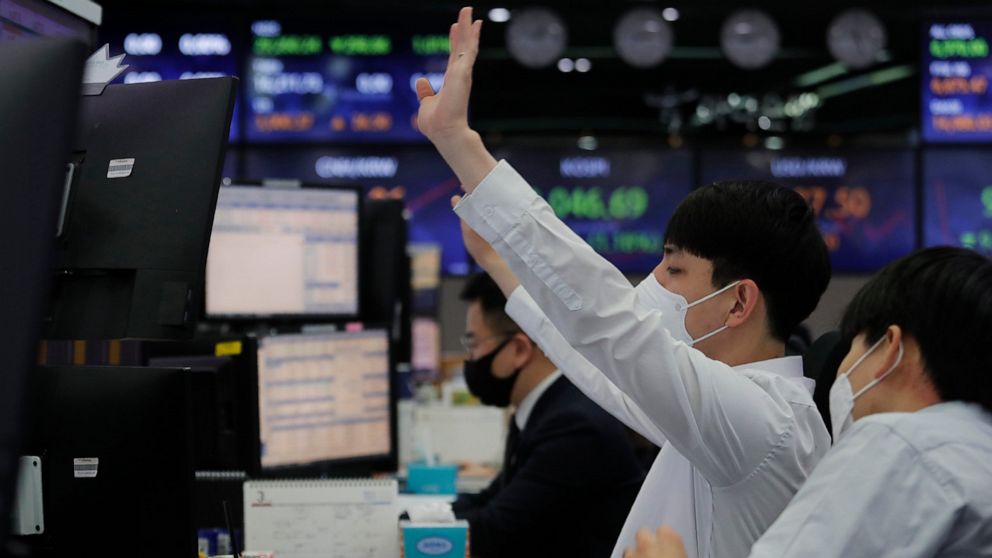Stocks turn lower as bond yields continue their upward march
Stocks turned lower as bond yields made another upward spike, renewing pressure on high-flying technology stocks
NEW YORK — Stocks turned lower on Wall Street Thursday as bond yields made another upward spike, renewing pressure on high-flying technology stocks.
The S&P 500 was down 2% as of 2:11 p.m. Eastern time, giving up an early gain and sliding into the red for the year. The tech-heavy Nasdaq pulled back 2.8%. The Dow Jones Industrial Average fell 553 points, or 1.7%, to 30,726. Small-company stocks fell even more.
The losses came as the yield on the 10-year Treasury rose sharply during a question-and-answer session with Federal Reserve Chair Jerome Powell during which Powell said inflation will likely pick up in the coming months. He cautioned that the increase will be temporary, and won’t be enough for the Fed to alter its low-interest rate policies.
As the economy reopens this spring and summer, and vaccines are distributed and the coronavirus retreats, many economists expect a spending boom that will stretch available supplies of goods and services. That will likely push up prices, Powell said.
Powell gave no hint that the Fed would take steps to keep longer-term interest rates in check, such as by shifting some of its $80 billion in monthly Treasury purchases to longer-term securities.
“We think our current policy stance is appropriate,” he said.
The yield on the 10-year Treasury note jumped to 1.54% during Powell’s remarks, from 1.47% just before, a significant move. At the beginning of the year the yield was trading at 0.93%.
Investors have been keeping a close eye on the bond market in recent weeks, where yields have been rising along with expectations that the economy, and possibly inflation, could be set to pick up as vaccinations increase and coronavirus restrictions on businesses, travel and schooling begin to lift more.
When yields rise quickly, it forces Wall Street to rethink the value of stocks. Technology stocks are most vulnerable to this reassessment after having soared during the pandemic, making them look pricier than the rest of the market.
“You’re having a fairly healthy and natural consolidation period,” said Mark Hackett, chief of investment research at Nationwide.
Wall Street has been anticipating an improving economy since late last year from the eventual distribution of vaccines, additional stimulus and a steadier reopening, he said.
“The market tends to do better when the good news is further out and struggle more when it is in hand,” he said. “There’s really nothing currently as the next catalyst.”
Crude oil prices jumped 3.8% after OPEC members agreed to leave most of their existing oil production cuts in place. That helped send energy company stocks broadly higher. Exxon Mobil rose 2.4% and ConocoPhillips rose 2.1%.
The Senate is moving forward with President Joe Biden’s stimulus bill, with most of the negotiations now happening between the more moderate Democrats in the Senate and the White House.
Investors are also looking ahead to the February jobs report on Friday. Economists surveyed by FactSet expect employers created 225,000 jobs last month. The report also includes numbers for how much wages are rising across the economy, a key component of inflation.
———
AP Economics Writer Christopher Rugaber contributed.
![]()


